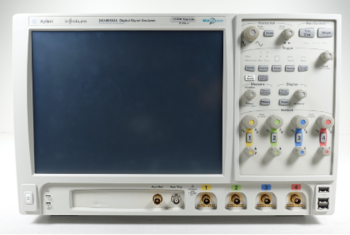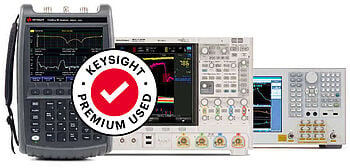- Introduction
- Joule Heating Explained
- Joule Heating's Influence on Electrical Design
- Impact on Electrical Components and Circuits
- Joule Heating's Impact on Circuit Testing
- Impact on Signal Integrity
- Component Specification and Joule Heating
- Joule Heating and Heat Management
- Interpreting Joule Heating Effects with Oscilloscopes and Signal Analyzers
- Observing Thermal Noise with Oscilloscopes
- Signal Analyzers and Heat Impact
- Advanced Methods of Heat Management in Electronics
- The Role of Joule Heating in Renewable Energy Systems
- Conclusion
- Whenever You’re Ready, Here Are 5 Ways We Can Help You
Did you know that the humble light bulb, a hallmark of the modern era, owes its ethereal glow to a less-known physical phenomenon – Joule Heating. Yes, the soothing incandescent light illuminating your home is born from the dissipation of electrical energy into heat.
Joule Heating, also referred to as ohmic heating or resistive heating, underpins many applications beyond the light bulb – from warming up your morning toast to forging molten steel. As electrical engineers, understanding this concept can empower you to make informed decisions about your projects, optimize circuit performance, and even prevent potential disasters.
Buy Oscilloscopes at a Great Discount
Joule Heating Explained
Joule heating, named after the English physicist James Prescott Joule, is the process through which electrical energy is converted into thermal energy. The basis of this phenomenon is simple: when an electric current flows through a conductor with resistance, energy is lost in the form of heat.
The Mathematical Explanation
Joule’s first law mathematically describes this principle as:
Q = I^2*R*t
Where:
- Q is the heat energy generated (joules)
- I is the current passing through the resistor (amperes)
- R is the resistance of the conductor (ohms)
- t is the time for which current flows (seconds)
It's important to remember that the heat generated is directly proportional to the square of the current passing through the conductor, the resistance of the conductor, and the time for which current flows.
| Key Takeaway |
|---|
| Joule heating, the process of electrical energy conversion into heat in a conductor, is an intrinsic phenomenon in any electrical system that can have profound effects on circuit performance and longevity. Harnessing a comprehensive understanding of this principle is essential for designing efficient systems, managing heat effectively, and preventing potential component degradation or failure. |
Joule Heating's Influence on Electrical Design
Every electrical engineer must be aware of the impact Joule heating can have on circuits. From causing minor inefficiencies to creating significant safety hazards, ignoring this phenomenon can lead to disastrous consequences.
Impact on Electrical Components and Circuits
- Component Damage or Failure: Excessive heat caused by Joule heating can lead to component degradation or outright failure.
- Performance Inefficiency: The thermal energy generated through Joule heating is typically considered wasted energy, reducing the efficiency of electrical systems.
- Safety Hazards: High levels of Joule heating can cause fires or explosions in extreme circumstances.
Joule Heating's Impact on Circuit Testing
Joule heating, an indispensable part of any electrical system, significantly affects circuit testing. This process is especially critical when using oscilloscopes and other testing equipment. Let's explore the impact of Joule heating on signal integrity, component specification, and heat management.
Impact on Signal Integrity
Signal integrity is the measure of the quality of an electrical signal. In an electrical system, signal integrity can be compromised by numerous factors, one of which is the heat generated by Joule heating.
- Noise Introduction: Excessive heat can cause increased thermal noise in your system, leading to an overall degradation in the signal-to-noise ratio.
- Material Properties Change: As temperature rises, the electrical properties of materials (like resistance) can change, causing signal distortion.
- Timing Issues: In certain high-speed circuits, the increase in temperature can impact the timing of signals, potentially leading to system instability.
As such, maintaining low levels of Joule heating can be critical to maintaining high signal integrity.
Component Specification and Joule Heating
Choosing the right components for an electrical system is crucial for managing Joule heating effectively.
- Thermal Rating: Every component comes with a thermal rating that specifies the maximum temperature it can safely operate at. Exceeding this can lead to component failure.
- Thermal Resistance: This defines how efficiently a component can dissipate heat. A lower thermal resistance indicates better heat dissipation capability.
- Power Rating: Components are also rated for power. Exceeding this can cause excessive Joule heating, leading to a high risk of damage.
During the design phase, considering these specifications can help mitigate the risk of component failure due to Joule heating.
Joule Heating and Heat Management
Heat management plays a crucial role in any electrical system, and the design phase is the best time to plan for it.
- Heatsinks: A popular method for heat dissipation is the use of heatsinks, which are designed to increase the surface area in contact with the cooling medium surrounding them.
- Cooling Fans: In high power systems, active cooling methods like fans can help circulate air and remove excess heat generated from the system.
- Thermal Compounds: These are used to fill air gaps between the component and the heatsink to improve heat dissipation.
- PCB Design: Designing PCBs with good thermal management—like using wider traces for high current paths—can help manage Joule heating effectively.
| Heat Management Solution | Use in Circuit Design |
| Heatsinks | Increase surface area for heat dissipation |
| Cooling Fans | Actively remove heat from system |
| Thermal Compounds | Improve contact between component and heatsink |
| PCB Design | Designed to manage heat at the board level |
Considering Joule heating during circuit testing ensures the integrity and longevity of the design. A keen understanding of how to balance and manage this heat can lead to more efficient and reliable electrical systems.
Interpreting Joule Heating Effects with Oscilloscopes and Signal Analyzers
Understanding Joule heating is crucial when using diagnostic tools like oscilloscopes and signal analyzers, as this phenomenon can affect the readings and interpretations of these devices. Thus, oscilloscopes are ideal tools for diagnosing Joule effects.
Observing Thermal Noise with Oscilloscopes
An oscilloscope is a powerful tool for observing real-time signal voltages, often used to diagnose malfunctions and optimize efficiency in electronic devices. When a device heats up due to Joule heating, it generates thermal noise, also known as Johnson-Nyquist noise.
This noise can be seen as random spikes in an oscilloscope's voltage-time graph, potentially masking the true signal and making diagnosis more difficult. By understanding that these spikes might be due to Joule heating, engineers can make more informed decisions about how to rectify the issue.
Signal Analyzers and Heat Impact
Signal analyzers, or spectrum analyzers, provide frequency domain representation of signals, enabling engineers to examine the spectral composition of electrical, acoustic, or optical waveform. However, excessive heat can change the electrical properties of components, affecting the signal's frequency response.
When viewing the output of a heated device on a signal analyzer, the frequency components might deviate from their expected values due to changes in resistance, inductance, or capacitance caused by the heat. By understanding how Joule heating can impact the readings of these devices, electrical engineers can more effectively diagnose, troubleshoot, and optimize their systems.

Advanced Methods of Heat Management in Electronics
Managing Joule heating effectively is a key challenge in electronics. While traditional methods like heatsinks and fans are widely used, new technologies are being developed for more effective heat management.
- Thermoelectric Coolers: These devices use the Peltier effect to create a heat flux between two different types of materials. Running a current through the junction of these materials can move heat from one side to the other, effectively "pumping" heat away from sensitive electronic components.
- Liquid Cooling: Liquid cooling is used in high-performance computing or data centers to remove heat from components using a fluid, such as water or specialized coolant. The fluid absorbs the heat and is then cooled down in a radiator before being recirculated.
- Phase-Change Materials: These substances can absorb or release a large amount of heat when they change phase (like from solid to liquid). Incorporating phase-change materials in electronic systems can help manage heat spikes and maintain component temperature within a safe range.
The Role of Joule Heating in Renewable Energy Systems
Joule heating is also a considerable concern in renewable energy systems as well. Let's consider two prime examples:
- Photovoltaic Solar Cells: Solar cells convert light energy into electrical energy. However, a portion of this energy is lost as heat due to the resistance in the cell material. Minimizing this resistive loss is an area of ongoing research in solar cell efficiency.
- Power Transmission in Wind Farms: Wind farms typically cover large areas, requiring long cabling to connect turbines to the grid. These cables are subject to Joule heating, which results in power loss. Hence, it's important to manage this heating to maximize the efficiency of power transmission.
Conclusion
Joule heating, a fundamental principle intrinsic to any electrical system, plays a key role in circuit performance and component longevity. This process, stemming from the conversion of electrical energy into heat, affects signal integrity, dictates component specifications, and necessitates strategic heat management. By recognizing its effects, you can make informed decisions when designing, diagnosing, and optimizing electronic systems.
Every challenge created by Joule heating serves as an opportunity for innovation, pushing electrical engineers to create more robust, reliable, and efficient designs. However, to fully seize these opportunities, having the right tools at hand is crucial.
Keysight's Used Equipment Store offers high-quality pre-owned testing equipment to help you effectively navigate the effects of Joule heating. From oscilloscopes to signal analyzers, Keysight equips you with the tools you need to navigate the complexities of Joule heating effectively.

Browse Oscilloscopes at a Great Discount
Select up to 3 instruments to compare
Whenever You’re Ready, Here Are 5 Ways We Can Help You
- Browse our Premium Used Oscilloscopes.
- Call tech support US: +1 800 829-4444
Press #, then 2. Hours: 7 am – 5 pm MT, Mon– Fri - Talk to our sales support team by clicking the icon (bottom right corner) on every offer page
- Create an account to get price alerts and access to exclusive waitlists
- Talk to your account manager about your specific needs
